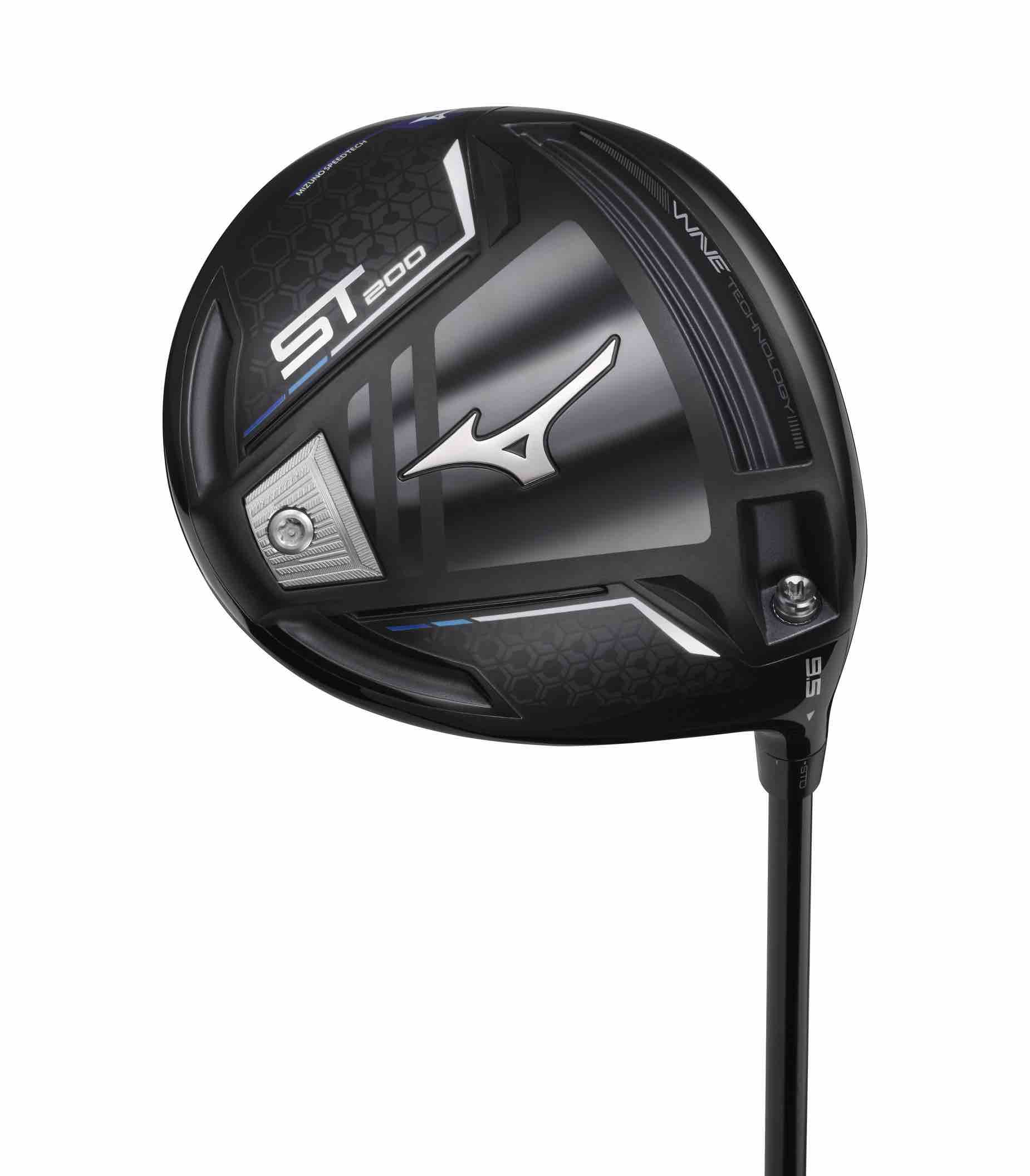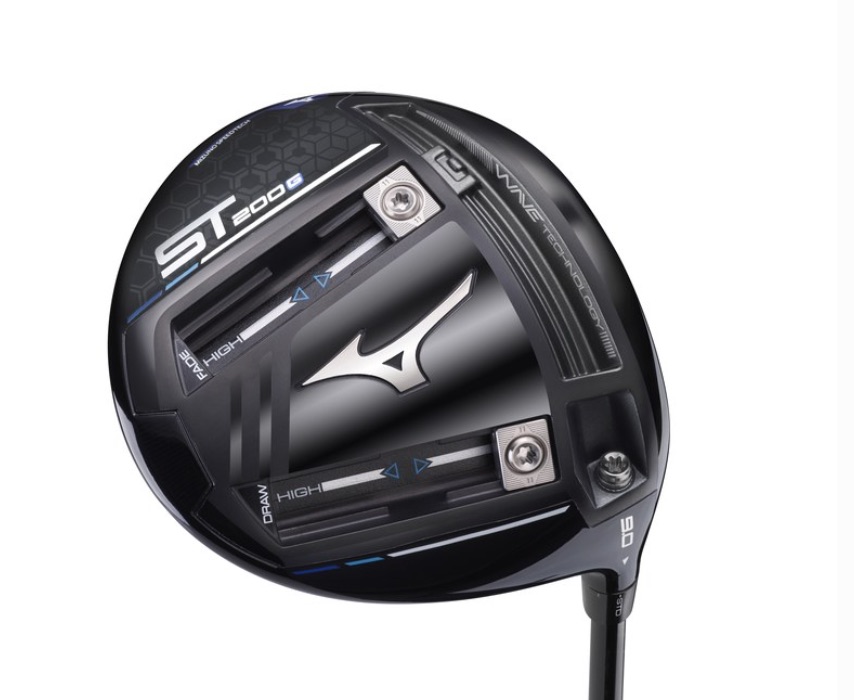The Mizuno ST200 drivers and fairway woods use new titanium and high-strength steel alloys to fuel new levels of performance. Yes, that’s right. Golf club technology is still finding new titanium and steel alloys to enhance distance.
Topping the company’s search is the use of what’s called a “super titanium alloy” in the face of the ST200 family of drivers – the ST200, ST200G and ST200X – the broadest launch of drivers in the company’s history. While Mizuno’s ST180 and ST190 drivers the last two years utilised what’s called an “alpha-beta” titanium in SP-700, the ST200 line will benefit from forged SAT 2041, a more “beta rich” titanium, according to David Llewellyn’s director of research and development at Mizuno USA. While that may sound like a lot of Greek to the non-metallurgists out there, the simple explanation is that SAT 2041 titanium is both stronger and more flexible than the 6-4 titanium that has been commonly used in drivers in the past.
SAT 2041, which was developed more than two decades ago in Japan by Sumitomu Metal Industries for the automotive industry, got some of its first sport application in bike racing where it was used in to improve bicycle gears for professional road bike racers. According to documents from the early 2000s, those gears were built to withstand 2,200 pounds (1,000kg) of “instantaneous force while racing.” Llewellyn said the key to its combined strength and flexibility is the more cubic molecular structure of the alloy. What it really means, Llewellyn said, is new face design possibilities for new ball speed possibilities, including an increase in the face’s spring like effect or coefficient of restitution (COR).
“If it’s more flexible and it’s stronger we can get more aggressive with our multiple thicknesses on our face design to expand the area with high COR,” he said. “We can get more rigid around the centre and less rigid around the perimeter to expand that area.
“As a beta titanium it does offer increase in ballspeed because of its ability to spring back and its ability to recover faster from strain. The way those atoms are arranged the face just wants to spring back a little faster. So when the face deflects from the ball it just gives it a little extra.”

The Mizuno ST200 drivers target three performance types, Llewellyn said. The standard ST200 features an adjustable hosel and a back weight chip to raise the moment of inertia to nearly 5,000 grams-cm2 for better stability on off-centre hits. The lower-spinning ST200G features sliding weights in two tracks that stretch along the sole from front to back to tweak spin, trajectory and left/right bias. The ST200G produces less spin than the ST190G, but the longer weight tracks mean the range of low to high spin possible when the weights move from the back to front is approximately 300 rpms of reduced spin. Even with the weights back and a higher MOI, the ST200G has a very similar spin to the ST190G with its weights forward. Finally, the ST200X is a lightweight model with relatively higher lofts and a natural draw bias. Similar to specs popular in the Japan market but gaining increasing popularity in the US, it uses a 48-gram shaft and has an overall club weight of 267 grams, about 50 grams lighter than the ST200 and ST200G models.
A major part of the improved performance beyond the face material is a new carbon crown construction that features internal ribs. Those ribs are designed to strengthen the carbon crown so it can better support and concentrate the flexing in the face, while the carbon crown lightens the load up top so the centre of gravity moves lower in both the ST200 and ST200G, compared to last year’s models. Also improving the CG location is the reconfiguration of the trademark wave pattern on the sole. It’s more compact size means it uses less mass while still providing the structural performance benefits. That mass can be repositioned deeper to facilitate the weight chips on the ST200 and ST200X and additional perimeter weighting to further increase the MOI on the ST200G.

Each model also continues the company’s adjustable loft approach that tweaks loft by plus or minus two degrees. The ST200 9.5-degree model accommodates a loft range of 7.5 to 11.5 degrees, and the 10.5-degree model fits a range from 8.5 to 12.5 degrees. The more compact, better player-focused ST200G comes in a single 9-degree head that adjusts between 7 and 11 degrees and the ST200X, which features a weight screw on the heel side of the sole, is also available in just one 10.5 head that adjusts between 8.5 and 12.5 degrees
That material approach defines the improvements to the ST200 fairway line, which includes a compact adjustable model (the TS model) and a non-adjustable version that provides a larger footprint for higher off-centre hit forgiveness. The face employs a new high strength steel alloy, a maraging MAS1C steel that has been used in Formula 1 racecar engines. That thins the face on the fairway woods to less than two millimetres.

Like the drivers, the centre of gravity is low thanks to a new carbon composite crown that features the similar internal ribs to strengthen the thinner structure compared to the ST190 fairway woods. That lighter mass on the crown allows the saved weight to be pushed lower and farther back so the centre of gravity on the ST200 fairway woods is both lower and deeper behind the face than on the ST190.
Also like the drivers, the wave structure on the sole is more compact, which saves weight to contribute to both a lower centre of gravity and higher stability on off-centre hits, while still maintaining its capacity to control sound and feel.
The TS version comes in a single head that adjusts between 13 and 17 degrees, while the non-adjustable standard version is offered in 15- and 18-degree models.
The ST200 metalwoods will be available at retail in Australia from February 14 (Drivers: $799 for ST200, ST200X, $849 for ST200G; Fairway woods: $449 for ST200; Hybrid: $399 for CLK model).



